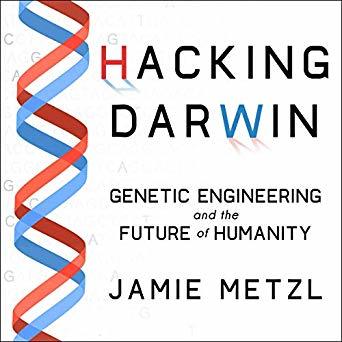What do you think?
Rate this book


Audible Audio
First published April 23, 2019
"By simultaneously raising the taboo topics of intelligence differences between people and groups, IQ, and race, Herrnstein and Murray smashed into the buzz saw of progressive public opinion.
New York Times columnist Bob Herbert called The Bell Curve ŌĆ£a scabrous piece of racial pornography masquerading as serious scholarship.ŌĆ� HarvardŌĆÖs Stephen Jay Gould, a longtime critic of the concept of general factor intelligence, argued that other environmental factors like prenatal nutrition, home life, and access to quality education had a more significant influence on a personŌĆÖs intelligence than Herrnstein and Murray accounted for.
Other critics attacked the book as reductionist, scientifically sloppy, and dangerously biased."
"In their thought-provoking paper, Embryo Selection for Cognitive Enhancement: Curiosity or Game Changer?, Oxford professors Carl Shulman and Nick Bostrom attempt to quantify what increase in IQ might be possible based on mating unimplanted embryos with each other.
The IQ of a traditionally conceived child, an n of 1, simply has the genetic component of IQ he or she is born with. Because the genetic component of IQ varies among embryos created by the same parents, other than identical twins, we can safely assume the range of IQ options would be greater the larger the number of embryos that might be generated. This means that we would have a greater chance of selecting an unimplanted embryo with a higher IQ if the number of options was larger.
According to Shulman and BostromŌĆÖs calculations, the average IQ difference between the highest and lowest IQ of the fifteen or so embryos conceived in IVF, as practiced today, from the same parents would be about twelve points. But if we use the induced stem-cell procedure to start with a hundred fertilized eggs, rather than just ten or fifteen, the average difference between the highest and lowest genetic IQ potentials between these hundred options is estimated at about twenty points. Making a thousand embryos could increase the average differential between the highest and lowest IQ of all the embryos to about twenty-five points.
Twenty-five IQ points may seem like a small return from generating and testing a thousand
pre implanted embryos, but that difference would, on average, lead to vastly different life experiences...
...Shulman and Bostrom estimate that breeding five generations of embryos picked for having the highest IQ among their ten cohorts could create a bump up of sixty-five points in IQ, and a 130-point bump after ten generations."
"Mozart grew up in the Hapsburg court, but how many Mozarts are today languishing in Syrian refugee camps?"
"...anti-GMO activists, many inspired by some combination of a distrust of new
technologies, U.S. global corporations, and market capitalism more generally, as well as by the
romanticizing of small farmers and fears their food supplies will be contaminated, have increasingly raised the alarm over what they started calling Frankenfoods.
Anti-GMO organizations have launched massive disinformation campaigns designed to counter and
muffle the voices of the scientific community. Many people are susceptible to this type of disinformation because most of us instinctively resort to a ŌĆ£naturalistic fallacyŌĆ� that nature is natural, even though our ancestors have been massively modifying much of it for thousands of years."